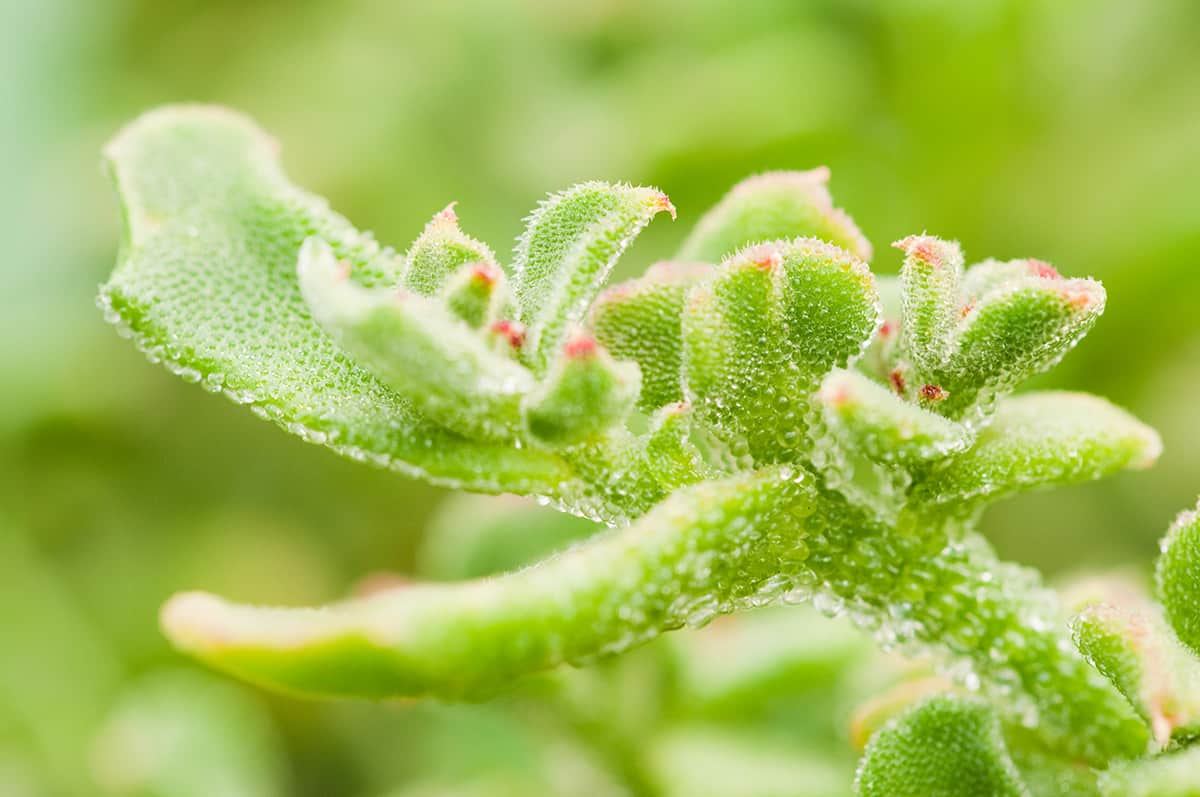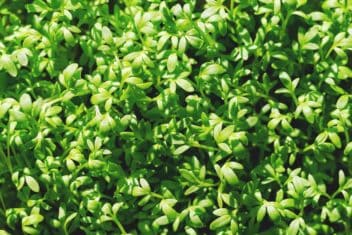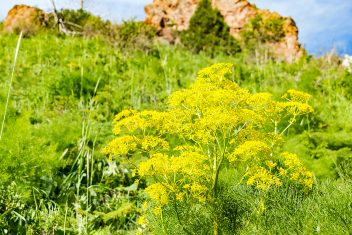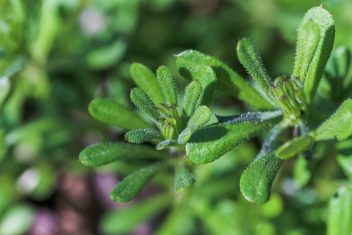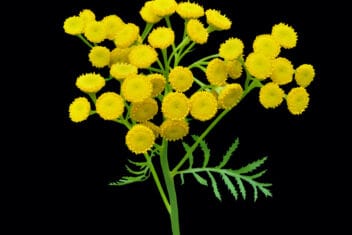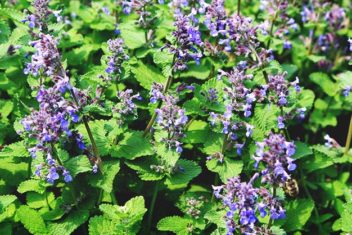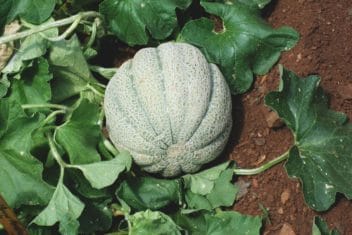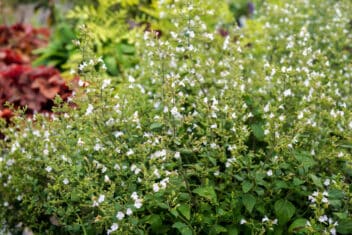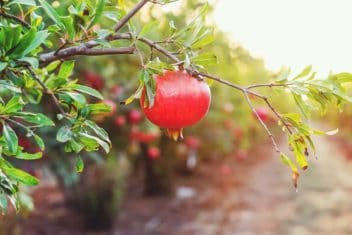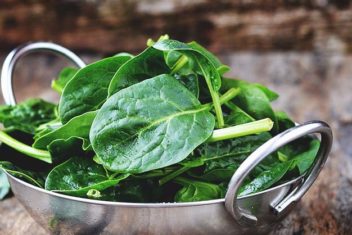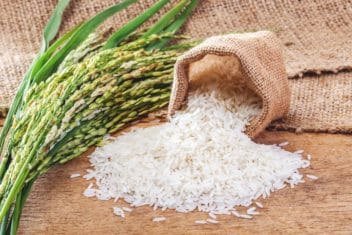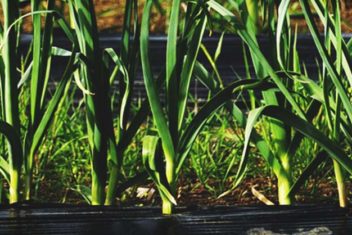Common ice plant is one of those veggies that chefs love because it makes a unique addition to the restaurant menu. But it may be completely unknown to the average gardener.
If you want something special that isn’t fussy in the garden, try growing common ice plant. The leaves and stems have a fresh, salty flavor that brings to mind the ocean. You can also make a soap substitute from the leaves.
Willing to be creative and a little daring with your veggie garden? Let’s get started!
What is Ice Plant?
Native to South and West Africa, ice plant (Mesembryanthemum crystallinum) was accidentally spread worldwide in ship ballast tanks in the 18th century. Sailors filled the tanks with sand, and pieces of the plant would hitch a ride.
Now, it has naturalized in many areas.
It’s also known salty ice plant and crystalline iceplant.
The ‘salt ice plant’ gets its name from specialized, translucent cells that form on the outside of the plant. They are the little hairs called trichomes that form on most plants, but they look like they are filled with water on the ice plant.

In some states in North America, salty ice plant is considered invasive and is banned. Check to see if ice plant is legal in your area before planting.
Because it can take over a garden, consider growing common ice plants in large containers in a greenhouse or outside where they get full sun. Container growing helps keep ice plant under control.
Seeds are available online and you can rarely find seedlings available at nurseries.
This plant is hermaphrodite, so it is both male and female. It’s pollinated by insects.
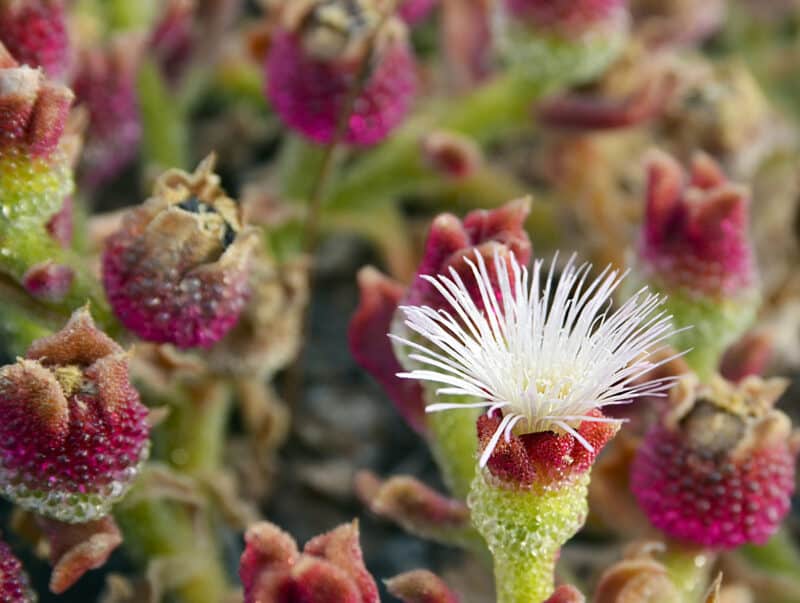
One more thing: as ice plant dies off, it can add a little saline or salt into the soil, which prevents some other plants from growing in that spot. That’s one of the reasons my plants are in containers.
How to Plant Salty Ice Plant
Common ice plant will die from frosts. It grows well in USDA Growing Zones 8 to 11. You can grow it as an annual in other regions.
The optimal temperature for salty ice plant is 68°F to 86°F. It can survive in temperatures as low as 50°F, but again, it can’t handle frost.
In cooler areas, or areas with even a light frost, plant in a greenhouse or cold frames.
Full sun is required for salty ice plant to thrive. It won’t grow in any amount of shade.
Soil wise, common ice plant isn’t fussy about where it’s growing. Remember that it originally comes from coastal areas, which often have inhospitable conditions that most plants can’t survive in.
It will grow in sandy, loamy, or even clay soil, as long as it drains well. Aim for a pH from 6.1 to 7.3.
Plant about nine inches apart if growing outside. Feel free to plant closer if growing in pots, as long as you keep them trimmed.
Sow seeds outdoors in spring when the weather is consistently warm, and there is no chance of frost.
Planting Seed
Plant seeds half an inch deep and cover lightly.
I prefer to plant at four inches apart and thin out to six to eight inches if necessary.
Water well until they germinate. I start with misting spray, but that takes diligence, so if you can’t keep an eye on the soil to make sure it doesn’t dry out, water well with a watering can with a fine spray.
Container Planting
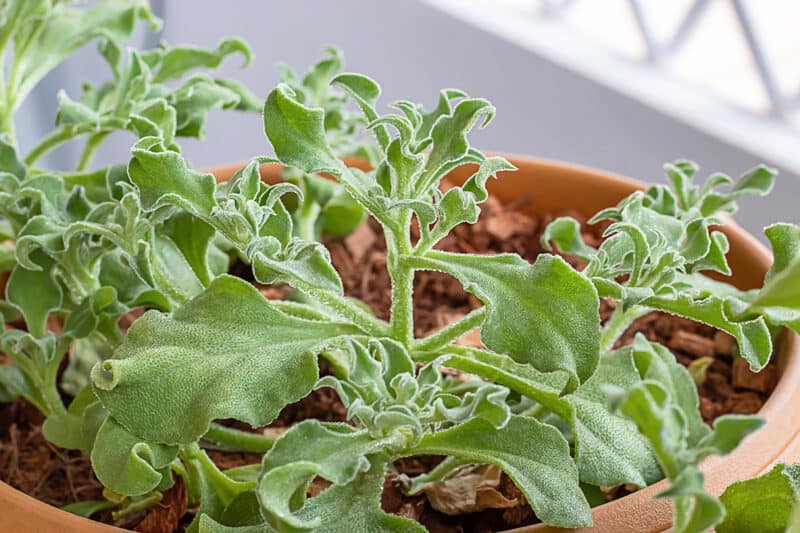
Again, consider growing in large pots. This way, you can control the plant’s spread, and you’re not adding any salt to your garden soil.
Crystalline ice plant grows well in containers, and since it takes over the area where it’s planted, along with adding salinity to the soil, pots make sense.
I use the biggest containers I can get. Most of my salty ice plants are planted in half wine barrels. You can plant in smaller containers, however, if you don’t mind a smaller harvest.
Use potting mix and ensure there are enough holes in the bottom for drainage. Drill more if you find the soil is retaining too much water.
Plant the seeds half an inch deep and water well. Space four to eight inches apart. Within 14 to 21 days, you should see germination. Ice plant his a high germination rate.
You can transplant the seedlings to your garden once they reach two inches in height if you are planting out in the garden.
Caring for Salty Ice Plant
Ice plants are easy to grow and do well in just about every circumstance. Once established, you can just harvest without putting in much effort.
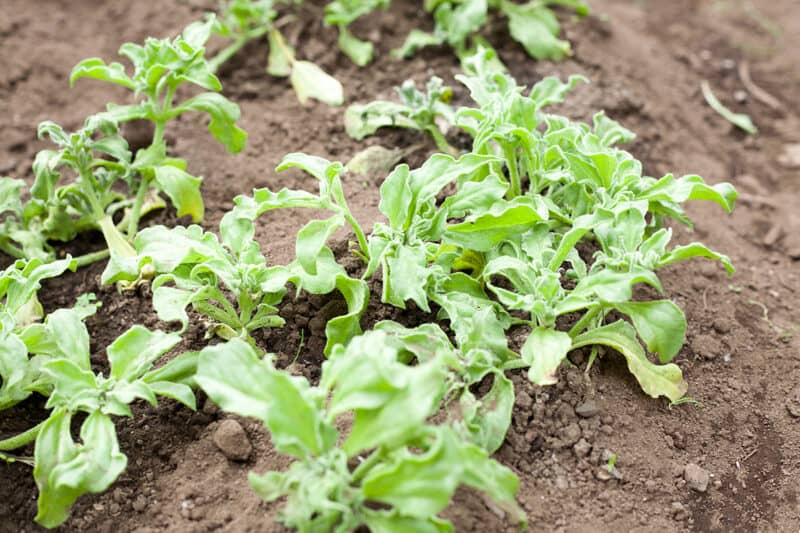
Fertilizer
Salty ice plant requires little feeding, as do many plants that thrive in coastal areas. So don’t worry about fertilizing. This plant does well in all soil types and keeps going.
If you do fertilize, dig in well-rotted manure, or use a well-balanced fertilizer once during fall.
Water
Water common ice plant well when it’s germinating and while young. Once established, the plant requires little water. It’s quite adept at surviving in the summer heat or during droughts.
Companion Planting for Salty Ice Plant
Try growing salty ice plant with any vegetable that has a tolerance for saline soil. It’s a little hit and miss, but I’ve planted this list in the same containers as salty ice plant, and all have done well.
Avoid planting:
- Beans
- Celery
- Cucumber
- Radish
You decide by trial and error if these plants work with salty ice plant.
- Peas
- Carrtots
- Corn
Common Problems and Solutions for Growing Ice Plant
Once established, ice plant suffers from few pests and diseases. It’s the young plants that have issues.
Root Rot
Root rot affects the roots of plants when they sit in soil that holds too much moisture. The disease is caused by a fungus, which is easily transferred around the garden with plants.
If your young salty ice plants look wilted, stunted or yellowing, and they’re sitting in the ground or a container that isn’t draining properly, you may have root rot.
Roots should be firm and white. If you dig down to the plant’s roots suspected of having root rot, they will be brown and soft.
Prevention is the best cure. Ensure your soil is well-draining. Add organic matter to improve its ability to drain water away.
Damping Off
This is another fungal disease that affects your plant’s roots and stems under the surface.
If your plant germinates well but dies off just a couple of days, damping off may be the culprit.
Ensure your soil is well-draining. Also, make sure the plants have good air circulation. Always start with fresh soil and clean your tools and containers with a 1:10 bleach water solution.
Harvesting Ice Plant
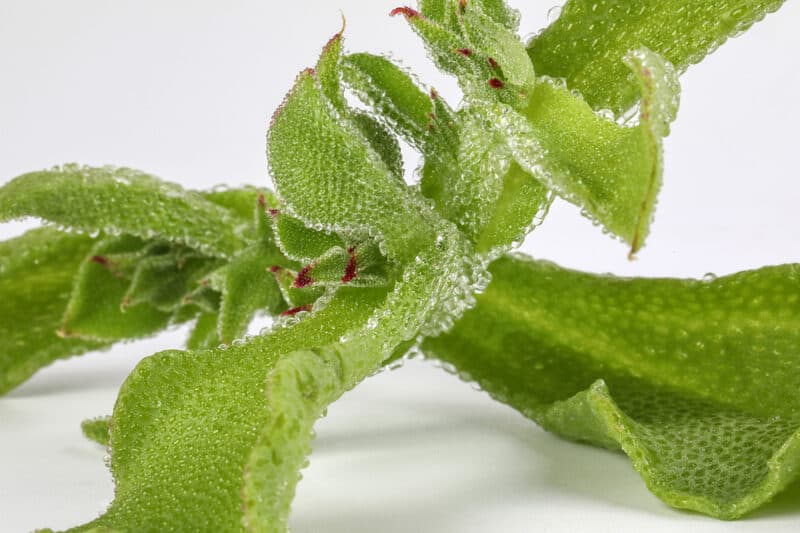
The leaves and stems can be eaten raw and added to salads for a salty crunch.
Use the leaves as you would spinach. I like to fry them off in a little butter and salt as a tasty side dish. This recipe for a salad with sesame soy dressing is incredibly tasty.
Once established, salty ice plant requires very little input from you except harvesting to ensure it doesn’t spread too far if it’s in the ground.
Enjoy this plant, unique in both appearance and taste. It will be a talking point at your next dinner party.
